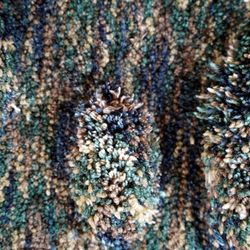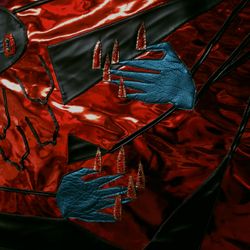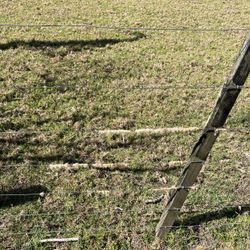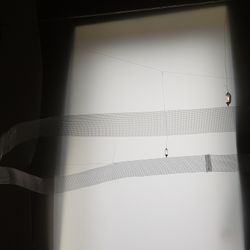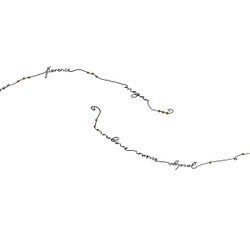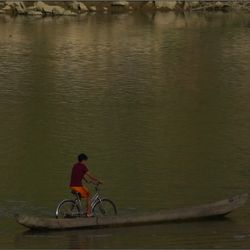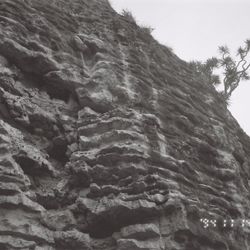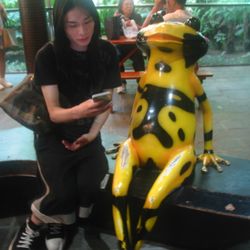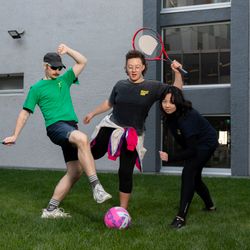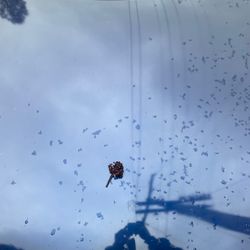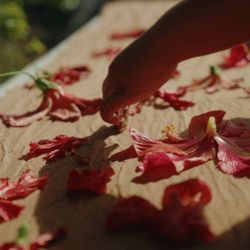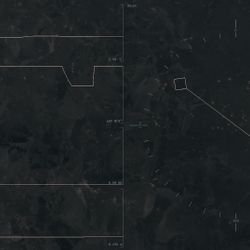Whakawhanaukataka is an exhibition of ceramic sculptures and installation that is attentive to how earth-materials, people and other things belong to specific places; silt carried along by a river to the shoreline, rocks that erode and tumble from mountains, objects kept safe in containers and mana whenua held by whakapapa to land.
Past Exhibition
Hātarei 2 Noema -
Paraire 20 Tīhema
Saturday 2 November -
Friday 20 December
2024
Research image courtesy of the artist
The earth-materials gathered by Jess Nicholson for Whakawhanaukataka are sourced from various sites, including Maukatere mauka and Rakahuri awa - ancestral sites for Ngāi Tūāhuriri. Other sites include Waikuku beach, Huriawa and Karitāne north of Ōtepoti, Matatā near where Nicholson grew up, Tapu te Ranga in Te Whanganui-a-Tara where they lived for several years, ash from various household fireplaces and recycled clays from the Dunedin School of Art. Each of these places holds significance and a sense of belonging for Nicholson that is felt through the materials, yet the works dwell in thoughts of how a place can be considered a home without connections through whakapapa.
Maukatere marble run invites people to select from a clutch of clay marbles and drop them at the top of the mauka where they rattle downwards to the floor. The journey along the marble run mimics one rocks often take - generally each rock having fallen from a much larger mountain at some point. Rocks too over time terraform and are ground into plastic, malleable clay. Tūmatakuru, or matagouri, is a thorny shrub that grows plentifully along Te Waipounamu’s east coast. Its pointed barbs often greeted Nicholson at the places where they visited or collected earth-materials and they came to see the plant as a kind of guardian, an obstruction protecting the environment around them. Net and Cave chain reference protection as well and bring to mind chainmail body armour - a type of armour valued historically for being strong but flexible. The artworks’ interlaced clay loops collectively form a garment or torso-shaped whole, bound together despite the missing links and gaps present in Net.
Nicholson is curious about how things find natural containers or spaces to fit in. Maukatere cubby and Rakahuri shelf both have separate ceramic objects fitted into their gaps. Stone curtain crossess the interior of the gallery, demarcating space in a way that is permeable through the gaps between the beads. Nicholson sees a beginning for southern Māori ceramic traditions in the use of kōkōwai for many purposes including to make drawings in limestone shelters across Te Waipounamu, the shelters themselves an architectural feature offering a ‘container’ for people, drawings and objects. Other forms of container, such as pōhā and woven holders of kōkōwai can be thought of as linked to ceramic traditions too, with their function closely related to that of ceramic vessels, if not their materials.
Whakawhanaukataka brings a combination of vessels and forms together that are interlinked, yet that speak to their own transitional, in-between states of being. The earth-materials gathered by Nicholson exist in slow, geological processes constantly unfolding, even after their firing into ceramic objects. Lineages are mixed, as clay, sand, silt and glass from different sources are recombined. An inherent state of perpetual becoming takes shape, offering pathways and chances for things to link together.
Installation view, 2024.
Photo: Miranda Bellamy
Jess Nicholson, Rock pool, Recycled clay, recycled glass, Huriawa kōkōwai, Matatā pumice, fireplace ash, Waikuku sand, 2023-24.
Photo: Miranda Bellamy
Jess Nicholson, Estuary portal, Recycled clay, Huriawa kōkōwai, fireplace ash, 2024.
Photo: Miranda Bellamy
Jess Nicholson, Net, Recycled clay and glass, Rakahuri clay, 2024.
Photo: Miranda Bellamy
Jess Nicholson, Net (detail), Recycled clay and glass, Rakahuri clay, 2024.
Photo: Miranda Bellamy
Jess Nicholson, Maukatere shelf, Recycled clay and glass, Maukatere clay, Waikuku sand, 2024.
Photo: Miranda Bellamy
Jess Nicholson, Cave cluster, Recycled clay and glass, Maukatere clay, Huriawa kōkōwai, Tapu te Ranga kōkōwai, Matatā pumice, Karitāne sand, fireplace ash, 2024.
Photo: Miranda Bellamy
Installation view, 2024.
Photo: Miranda Bellamy
Jess Nicholson, Maukatere marble run, Recycled clay and glass, Maukatere clay, Huriawa kōkōwai, Matatā pumice, Waikuku sand, fireplace ash and Waka huia, Recycled clay and ceramic shards, Huriawa kōkōwai, 2024.
Photo: Miranda Bellamy
Jess Nicholson, Maukatere marble run (detail), Recycled clay and glass, Maukatere clay, Huriawa kōkōwai, Matatā pumice, Waikuku sand, fireplace ash, 2024.
Photo: Miranda Bellamy
Jess Nicholson, Maukatere marble run, Recycled clay and glass, Maukatere clay, Huriawa kōkōwai, Matatā pumice, Waikuku sand, fireplace ash and Waka huia, Recycled clay and ceramic shards, Huriawa kōkōwai, 2024.
Photo: Miranda Bellamy
Jess Nicholson, Maukatere marble run (detail), Recycled clay and glass, Maukatere clay, Huriawa kōkōwai, Matatā pumice, Waikuku sand, fireplace ash, 2024.
Photo: Miranda Bellamy
Jess Nicholson, Waka huia (detail), Recycled clay and ceramic shards, Huriawa kōkōwai, 2024.
Photo: Miranda Bellamy
Jess Nicholson, Tūmatakuru I, Recycled clay, glass and ceramic shards, Huriawa kōkōwai, 2024.
Photo: Miranda Bellamy
Jess Nicholson, Tūmatakuru I (detail), Recycled clay, glass and ceramic shards, Huriawa kōkōwai, 2024.
Photo: Miranda Bellamy
Jess Nicholson, Tūmatakuru I (detail), Recycled clay, glass and ceramic shards, Huriawa kōkōwai, 2024.
Photo: Miranda Bellamy
Installation view, 2024.
Photo: Miranda Bellamy
Jess Nicholson, Maukatere cubby, Recycled clay and glass, Huriawa kōkōwai, 2024.
Photo: Miranda Bellamy
Jess Nicholson, Trunk, Recycled clay and glass, soda fired, 2024.
Photo: Miranda Bellamy
Jess Nicholson, Cave chain, Recycled clay, Rakahuri clay, Maukatere clay, Huriawa kōkōwai, Matatā pumice, 2024.
Photo: Miranda Bellamy
Jess Nicholson, Cave chain (detail), Recycled clay, Rakahuri clay, Maukatere clay, Huriawa kōkōwai, Matatā pumice, 2024.
Photo: Miranda Bellamy
Jess Nicholson, Cave chain (detail), Recycled clay, Rakahuri clay, Maukatere clay, Huriawa kōkōwai, Matatā pumice, 2024.
Photo: Miranda Bellamy
Jess Nicholson, Rock table, Recycled clay, glass and ceramic shards, Maukatere clay, Huriawa kōkōwai, Tapu te Ranga kōkōwai, Matatā pumice, fireplace ash, Karitāne sand, 2024.
Photo: Miranda Bellamy
Jess Nicholson, Rock table (detail), Recycled clay, glass and ceramic shards, Maukatere clay, Huriawa kōkōwai, Tapu te Ranga kōkōwai, Matatā pumice, fireplace ash, Karitāne sand, 2024.
Photo: Miranda Bellamy
Installation view, 2024.
Photo: Miranda Bellamy
Jess Nicholson, Stone curtain (detail), Recycled clay and glass, Maukatere clay, Rakahuri clay, sand and stones, Huriawa kōkōwai, Tapu te Ranga kōkōwai, Pukekura kōkōwai, Matatā pumice, Broad Bay clay, 2024.
Photo: Miranda Bellamy
Jess Nicholson, Stone curtain (detail), Recycled clay and glass, Maukatere clay, Rakahuri clay, sand and stones, Huriawa kōkōwai, Tapu te Ranga kōkōwai, Pukekura kōkōwai, Matatā pumice, Broad Bay clay, 2024.
Photo: Miranda Bellamy
Jess Nicholson, Stone curtain (detail), Recycled clay and glass, Maukatere clay, Rakahuri clay, sand and stones, Huriawa kōkōwai, Tapu te Ranga kōkōwai, Pukekura kōkōwai, Matatā pumice, Broad Bay clay, 2024.
Photo: Miranda Bellamy
Jess Nicholson, Stone curtain (detail), Recycled clay and glass, Maukatere clay, Rakahuri clay, sand and stones, Huriawa kōkōwai, Tapu te Ranga kōkōwai, Pukekura kōkōwai, Matatā pumice, Broad Bay clay, 2024.
Photo: Miranda Bellamy
Jess Nicholson, Lichen shelf, Recycled clay and glass, Rakahuri stones, Tapu te Ranga kōkōwai, 2024.
Photo: Miranda Bellamy
Jess Nicholson, Tūmatakuru II, Recycled clay and glass, Huriawa kōkōwai, 2024.
Photo: Miranda Bellamy
Jess Nicholson, Tūmatakuru II, Recycled clay and glass, Huriawa kōkōwai, 2024.
Photo: Miranda Bellamy
Jess Nicholson, Rakahuri shelf, Rakahuri clay, Benhar clay, recycled glass, 2024.
Photo: Miranda Bellamy
Jess Nicholson, Rakahuri shelf (detail), Rakahuri clay, Benhar clay, recycled glass, 2024.
Photo: Miranda Bellamy
Jess Nicholson, Rakahuri shelf (detail), Rakahuri clay, Benhar clay, recycled glass, 2024.
Photo: Miranda Bellamy
Installation view, 2024.
Photo: Miranda Bellamy
Jess Nicholson, Pōhā tuatoru, Recycled clay and glass, Huriawa kōkōwai, Huriawa sand, 2024.
Photo: Miranda Bellamy
Jess Nicholson, Whakawhanaukataka chain, Recycled clay and glass, Rakahuri sand and clay, 2024.
Photo: Miranda Bellamy
Jess Nicholson, Whakawhanaukataka chain (detail), Recycled clay and glass, Rakahuri sand and clay, 2024.
Photo: Miranda Bellamy
Installation view, 2024.
Photo: Miranda Bellamy
Installation view, 2024.
Photo: Miranda Bellamy
Jess Nicholson, Rock pool, Recycled clay, recycled glass, Huriawa kōkōwai, Matatā pumice, fireplace ash, Waikuku sand, 2023-24.
Photo: Miranda Bellamy
Jess Nicholson, Estuary portal, Recycled clay, Huriawa kōkōwai, fireplace ash, 2024.
Photo: Miranda Bellamy
Jess Nicholson, Net, Recycled clay and glass, Rakahuri clay, 2024.
Photo: Miranda Bellamy
Jess Nicholson, Net (detail), Recycled clay and glass, Rakahuri clay, 2024.
Photo: Miranda Bellamy
Jess Nicholson, Maukatere shelf, Recycled clay and glass, Maukatere clay, Waikuku sand, 2024.
Photo: Miranda Bellamy
Jess Nicholson, Cave cluster, Recycled clay and glass, Maukatere clay, Huriawa kōkōwai, Tapu te Ranga kōkōwai, Matatā pumice, Karitāne sand, fireplace ash, 2024.
Photo: Miranda Bellamy
Installation view, 2024.
Photo: Miranda Bellamy
Jess Nicholson, Maukatere marble run, Recycled clay and glass, Maukatere clay, Huriawa kōkōwai, Matatā pumice, Waikuku sand, fireplace ash and Waka huia, Recycled clay and ceramic shards, Huriawa kōkōwai, 2024.
Photo: Miranda Bellamy
Jess Nicholson, Maukatere marble run (detail), Recycled clay and glass, Maukatere clay, Huriawa kōkōwai, Matatā pumice, Waikuku sand, fireplace ash, 2024.
Photo: Miranda Bellamy
Jess Nicholson, Maukatere marble run, Recycled clay and glass, Maukatere clay, Huriawa kōkōwai, Matatā pumice, Waikuku sand, fireplace ash and Waka huia, Recycled clay and ceramic shards, Huriawa kōkōwai, 2024.
Photo: Miranda Bellamy
Jess Nicholson, Maukatere marble run (detail), Recycled clay and glass, Maukatere clay, Huriawa kōkōwai, Matatā pumice, Waikuku sand, fireplace ash, 2024.
Photo: Miranda Bellamy
Jess Nicholson, Waka huia (detail), Recycled clay and ceramic shards, Huriawa kōkōwai, 2024.
Photo: Miranda Bellamy
Jess Nicholson, Tūmatakuru I, Recycled clay, glass and ceramic shards, Huriawa kōkōwai, 2024.
Photo: Miranda Bellamy
Jess Nicholson, Tūmatakuru I (detail), Recycled clay, glass and ceramic shards, Huriawa kōkōwai, 2024.
Photo: Miranda Bellamy
Jess Nicholson, Tūmatakuru I (detail), Recycled clay, glass and ceramic shards, Huriawa kōkōwai, 2024.
Photo: Miranda Bellamy
Installation view, 2024.
Photo: Miranda Bellamy
Jess Nicholson, Maukatere cubby, Recycled clay and glass, Huriawa kōkōwai, 2024.
Photo: Miranda Bellamy
Jess Nicholson, Trunk, Recycled clay and glass, soda fired, 2024.
Photo: Miranda Bellamy
Jess Nicholson, Cave chain, Recycled clay, Rakahuri clay, Maukatere clay, Huriawa kōkōwai, Matatā pumice, 2024.
Photo: Miranda Bellamy
Jess Nicholson, Cave chain (detail), Recycled clay, Rakahuri clay, Maukatere clay, Huriawa kōkōwai, Matatā pumice, 2024.
Photo: Miranda Bellamy
Jess Nicholson, Cave chain (detail), Recycled clay, Rakahuri clay, Maukatere clay, Huriawa kōkōwai, Matatā pumice, 2024.
Photo: Miranda Bellamy
Jess Nicholson, Rock table, Recycled clay, glass and ceramic shards, Maukatere clay, Huriawa kōkōwai, Tapu te Ranga kōkōwai, Matatā pumice, fireplace ash, Karitāne sand, 2024.
Photo: Miranda Bellamy
Jess Nicholson, Rock table (detail), Recycled clay, glass and ceramic shards, Maukatere clay, Huriawa kōkōwai, Tapu te Ranga kōkōwai, Matatā pumice, fireplace ash, Karitāne sand, 2024.
Photo: Miranda Bellamy
Installation view, 2024.
Photo: Miranda Bellamy
Jess Nicholson, Stone curtain (detail), Recycled clay and glass, Maukatere clay, Rakahuri clay, sand and stones, Huriawa kōkōwai, Tapu te Ranga kōkōwai, Pukekura kōkōwai, Matatā pumice, Broad Bay clay, 2024.
Photo: Miranda Bellamy
Jess Nicholson, Stone curtain (detail), Recycled clay and glass, Maukatere clay, Rakahuri clay, sand and stones, Huriawa kōkōwai, Tapu te Ranga kōkōwai, Pukekura kōkōwai, Matatā pumice, Broad Bay clay, 2024.
Photo: Miranda Bellamy
Jess Nicholson, Stone curtain (detail), Recycled clay and glass, Maukatere clay, Rakahuri clay, sand and stones, Huriawa kōkōwai, Tapu te Ranga kōkōwai, Pukekura kōkōwai, Matatā pumice, Broad Bay clay, 2024.
Photo: Miranda Bellamy
Jess Nicholson, Stone curtain (detail), Recycled clay and glass, Maukatere clay, Rakahuri clay, sand and stones, Huriawa kōkōwai, Tapu te Ranga kōkōwai, Pukekura kōkōwai, Matatā pumice, Broad Bay clay, 2024.
Photo: Miranda Bellamy
Jess Nicholson, Lichen shelf, Recycled clay and glass, Rakahuri stones, Tapu te Ranga kōkōwai, 2024.
Photo: Miranda Bellamy
Jess Nicholson, Tūmatakuru II, Recycled clay and glass, Huriawa kōkōwai, 2024.
Photo: Miranda Bellamy
Jess Nicholson, Tūmatakuru II, Recycled clay and glass, Huriawa kōkōwai, 2024.
Photo: Miranda Bellamy
Jess Nicholson, Rakahuri shelf, Rakahuri clay, Benhar clay, recycled glass, 2024.
Photo: Miranda Bellamy
Jess Nicholson, Rakahuri shelf (detail), Rakahuri clay, Benhar clay, recycled glass, 2024.
Photo: Miranda Bellamy
Jess Nicholson, Rakahuri shelf (detail), Rakahuri clay, Benhar clay, recycled glass, 2024.
Photo: Miranda Bellamy
Installation view, 2024.
Photo: Miranda Bellamy
Jess Nicholson, Pōhā tuatoru, Recycled clay and glass, Huriawa kōkōwai, Huriawa sand, 2024.
Photo: Miranda Bellamy
Jess Nicholson, Whakawhanaukataka chain, Recycled clay and glass, Rakahuri sand and clay, 2024.
Photo: Miranda Bellamy
Jess Nicholson, Whakawhanaukataka chain (detail), Recycled clay and glass, Rakahuri sand and clay, 2024.
Photo: Miranda Bellamy
Installation view, 2024.
Photo: Miranda Bellamy
Jess Nicholson (Waitaha, Kāti Māmoe, Kāi Tahu, Ngāi Tūāhuriri, Pākehā) is a ceramicist from Whakatāne living in Ōtepoti. Their practice focuses on cultural and environmental sustainability, incorporating local uku, kōhatu, sand and ash into their work to make real and permanent the emotional and cultural connection they feel to the whenua. In 2023 they made Kowhaea for Ayesha Green’s Folk Nationalism exhibition at City Gallery Wellington, and in 2024 they worked collaboratively with Wi Taepa and Simon Kaan for their Nohoaka Toi Ki Puketeraki series. They are the Caselberg Trust’s Creative Connections artist in residence for 2025.
